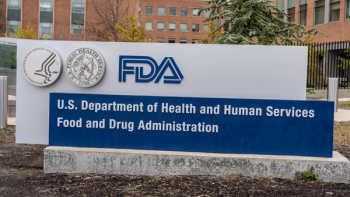
Manufacturers and Trading Partners Struggle to Meet Drug Tracking Requirements
As FDA and industry near the halfway mark in the process for establishing a national electronic drug tracking system by 2023, there’s concern among pharma companies, wholesaler/distributors, and pharmacists about meeting the deadline
As FDA and industry near the halfway mark in the ten-year process for establishing a national electronic drug tracking system by 2023, there’s considerable concern among pharma companies, wholesaler/distributors, and pharmacists about meeting the deadline. The process for establishing the rules and infrastructure for the track-and-trace system envisioned in the Drug Supply Chain Security Act (DSCSA), part of the Drug Quality and Security Act of 2013(DQSA), is proving to be complex and challenging for all parties.
FDA recently delayed requiring drug manufacturers to imprint unique product identifiers on individual packages by November of this year, saying it would not enforce that policy until Nov. 27, 2018. While major pharma companies are meeting the earlier timeframe for serializing and identifying drug packages, many generic drug makers and contract manufacturers reported confusion over who is responsible for devising the identifiers and for confirming compliance with requirements. And while manufacturers applauded gaining an additional year to fully identify individual drug packages, pharmacists and other supply chain partners raised concerns that the delay would make it even more difficult for them to comply with reporting requirements for 2018 and 2019.
Ilisa Bernstein, deputy director of the Office of Compliance in the Center for Drug Evaluation and Research (CDER), described considerable progress in realizing the electronic, fully interoperable track-and-trace system for drugs at a recent conference on implementing DQSA drug compounding and tracking initiatives sponsored by the Food & Drug Law Institute (FDLI). She had to acknowledge that manufacturers and other supply chain trading partners continues to use a wide variety of data transmission modes and formats, that some required data elements are not being exchanged, and that some transactions are still recorded on paper. And parties still are unsure how to report and verify “suspect” or “illegitimate” products within set timeframes.
FDA has yet to announce a pilot program required by the DSCSA to test the use of identifiers to verify transactions and notify parties of errors, and to assess if the system can identify, manage and prevent the distribution of suspect and illegitimate drugs. FDA intends to launch its pilot soon, said Bernstein, and meanwhile manufacturers and other parties are conducting their own test runs in specific areas. FDA also is working to develop and finalize a long list of guidances on key processes and policies, such as dealing with “grandfathered” products in the supply chain when new requirements take effect, and handling waivers, exceptions and exemptions.
Many of these issues were raised at an FDA public meeting last August and will be discussed further at another meeting December 5-6. Electronic interoperability, standards for data exchange, data architecture, and aggregation and inference are on the agenda. A third public meeting in February will review the status of the supply chain security program and what is needed to achieve a secure distribution system by 2023.
A thorny issue is data aggregation and inference and whether distributors and pharmacists may “infer” from the bar code on a case of drug product that it contains legitimate and identified packages without having to open every box. In addition, manufacturers remain uncertain about what company address should be used to register a product with FDA in situations involving co-licensed partners or where the license holder does not engage in production. Wholesalers and distributors face difficulties dealing with state licensing requirements, which continue to duplicate or conflict with new FDA registration policies. And all parties wonder how they will meet the 24-hour timeframe for responding to verification requests during lengthy local holidays.
As the U.S. drug tracking system moves forward, FDA and industry are keeping an eye on similar initiatives in other regions. The Asia-Pacific Economic Community and the World Health Organization are developing track-and-trace toolkits and policies. The International Coalition of Medicines Regulatory Authorities are examining areas for policy “convergence” in this area, and FDA is collaborating with parties developing the European Falsified Medicines Directive to avoid duplication and divergent policies.
Newsletter
Lead with insight with the Pharmaceutical Executive newsletter, featuring strategic analysis, leadership trends, and market intelligence for biopharma decision-makers.




